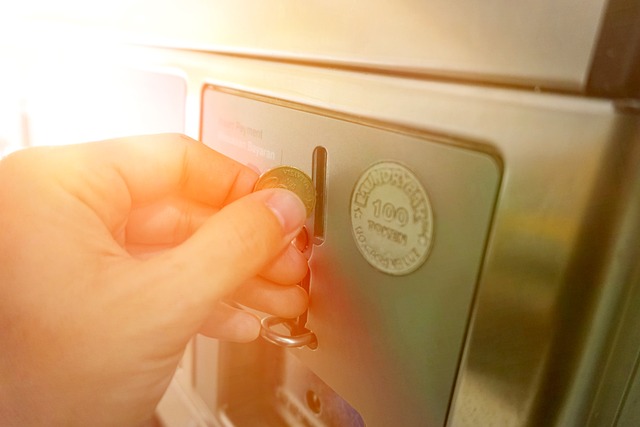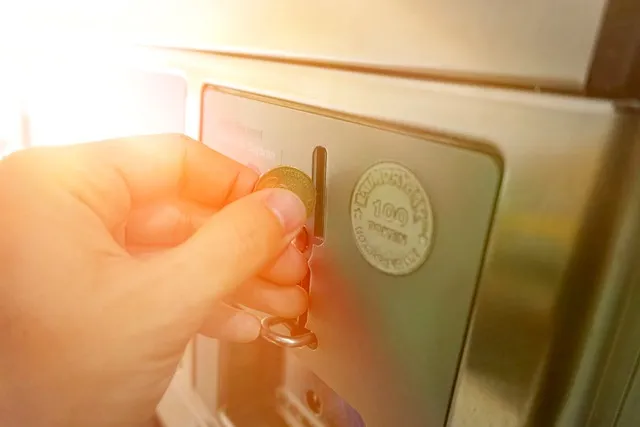What’s the Importance of Checking Your Dryer’s Fuses?
Picture this: your dryer is like a well-oiled machine that needs all its parts to function properly. If one of these parts—specifically, the fuse—fails, your entire drying process comes to a screeching halt. A fuse in your dryer acts like a safety valve. It protects your appliance from overheating by cutting off the electrical current if it gets too high. Without this safeguard, your dryer could suffer serious damage or even become a fire hazard.

Think of a fuse as a tiny, unsung hero. It’s tucked away, but it’s crucial for preventing potential disasters. When a fuse blows, your dryer might still appear to have power, but it won’t heat up properly. This is because the blown fuse interrupts the flow of electricity, leading to a frustratingly cold drum and damp clothes.
Now, imagine you’re in the middle of drying a load of your favorite clothes, and suddenly, the dryer just stops. Before you start panicking or calling a repair service, a quick check of the fuses could save you a lot of trouble. It’s a simple task that can prevent more extensive repairs and extend the life of your appliance. Plus, it’s far easier and cheaper than dealing with a complete dryer breakdown or a hefty repair bill.
In short, checking your dryer’s fuses is a small step with big rewards. It ensures that your dryer stays in tip-top shape and your laundry days remain hassle-free.
Why Ignoring Your Dryer’s Fuses Could Lead to Costly Repairs
Let’s face it: fuses might seem like insignificant parts of your dryer’s grand design, but they play a crucial role. Think of them as the unsung heroes in your dryer’s electrical system. Their job is to protect the appliance from electrical surges or faults. When a fuse blows, it’s essentially saying, “Whoa, something’s wrong here!” and it cuts off the power to prevent further damage.
Ignoring a blown fuse is like driving with a warning light on your dashboard. Sure, you might get away with it for a while, but eventually, you’re setting yourself up for a breakdown. If you keep using your dryer without addressing a blown fuse, you’re risking more than just an inconvenient delay in laundry day. Over time, this negligence can lead to bigger issues, like overheating or even a complete system failure. And trust me, replacing a few fuses is a lot cheaper than fixing a fried motor or replacing your entire dryer.
Moreover, a blown fuse doesn’t always mean your dryer will stop working immediately. It might just cause intermittent problems, like inconsistent drying or strange noises. These symptoms can be misleading, making it easy to ignore the issue until it spirals into something major.
In short, keeping an eye on those little fuses can save you from a heap of trouble—and a hefty repair bill. They might seem minor, but addressing them promptly ensures your dryer stays in top shape, saving you time, money, and a lot of headaches.
The Hidden Dangers of Faulty Dryer Fuses: What You Need to Know
First off, what exactly is a dryer fuse? It’s a safety feature designed to prevent overheating and reduce the risk of fire. Picture it as a guardian angel for your dryer, keeping it safe from dangerous temperature spikes. However, when this fuse is faulty, it can fail to perform its protective role, leaving your dryer—and your home—vulnerable.
So, how do you know if your dryer fuse is on the fritz? The signs are often subtle but critical. If your dryer suddenly stops working or you notice a lack of heat during a cycle, these could be red flags. Imagine trying to make a perfect cup of coffee, only to find that your coffee maker is malfunctioning. It’s frustrating, right? That’s the same kind of irritation you’d face with a faulty fuse. Not only does it affect your dryer’s performance, but it can also lead to bigger issues like electrical fires.
Replacing a faulty fuse might sound like a DIY job, but tread carefully. Handling electrical components can be risky if you’re not familiar with the ins and outs of appliance repair. It’s often best to call in a professional to ensure everything is handled safely and correctly. After all, your home’s safety is worth more than a quick fix.
Understanding the hidden dangers of faulty dryer fuses isn’t just about keeping your appliance running smoothly—it’s about safeguarding your home and loved ones from potential hazards.
Keep Your Clothes Dry: The Crucial Role of Dryer Fuses in Home Safety
Dryer fuses are like the bodyguards for your dryer. They’re designed to protect it from electrical overloads. When too much current flows through the system, the fuse blows, cutting off power and preventing potential fires. Without these fuses, your dryer could turn into a ticking time bomb, risking not only your clothes but your entire home.
Think of it this way: if your dryer were a car, the fuse would be the airbag. It’s not the thing you notice every day, but it’s crucial for safety. When everything’s working smoothly, you probably don’t give the fuse a second thought. But if it fails, you’d definitely notice. And in the worst-case scenario, you might face a fire hazard that could have been easily avoided with a simple fuse replacement.

Regularly checking your dryer’s fuse might not be the most exciting chore, but it’s essential. A blown fuse can mean your dryer isn’t working properly, leading to longer drying times or even an entirely nonfunctional appliance. Plus, it’s a small, manageable fix compared to dealing with the aftermath of a fire.
So, next time you use your dryer, remember: those little fuses are more important than they might seem. They keep your clothes dry and, more importantly, help safeguard your home from potential electrical hazards. Treat them with the attention they deserve, and your dryer will keep on doing its job efficiently and safely.
Preventing Dryer Fires: How Regular Fuse Checks Can Save Your Home
Why are fuse checks so important? Well, think of your dryer’s fuse as a safety valve. It’s designed to cut power if there’s a problem, preventing overheating and potential fires. If your fuse is faulty or not functioning correctly, it’s like having a faulty brake in your car—what could go wrong is more than just a minor inconvenience; it could be catastrophic.
Regularly inspecting and replacing the fuse ensures that your dryer’s safety features are always up to par. It’s a small, simple task that can prevent a major headache later. You don’t need to be a DIY expert to handle this. Just take a few minutes every few months to check the fuse, and you’ll be saving yourself from the stress and potential danger of a dryer fire.
Ever thought about how often you use your dryer? The more you use it, the more wear and tear it endures, making it all the more crucial to keep an eye on those fuses. It’s like changing the oil in your car—routine checks keep everything running smoothly.
So, next time you’re doing laundry, take a moment to think about your dryer’s fuse. It’s a small step that packs a big punch in keeping your home safe. Remember, safety starts with awareness, and in this case, a simple fuse check can be your best defense against fire hazards.
Dryer Not Heating Up? It Might Be a Fuse Issue—Here’s What to Do
First things first, let’s get our hands a little dirty. Before you do anything, make sure your dryer is unplugged. Safety first, right? Now, find the fuse—usually, it’s located in the dryer’s back panel or within the control panel. If you’re unsure, check your user manual; it’s your best friend in this scenario.
Once you’ve located the fuse, take a closer look. Fuses are small, cylindrical components, often encased in glass. A blown fuse might look blackened or have a broken wire inside. If you see this, it’s time to replace it. Luckily, fuses are cheap and easy to find at most hardware stores.
Next up, it’s replacement time. Pop the old fuse out and slide the new one in. It’s like swapping out a dead battery—you’re essentially giving your dryer a new burst of life. After replacing the fuse, plug your dryer back in and give it a test run. If it heats up and dries your clothes, you’ve done it!
Remember, while replacing a fuse is often a quick fix, if your dryer still won’t heat up, you might need to check other components like the heating element or thermostat. But for now, tackle that fuse, and you might just find that your dryer is ready to get back to business.

